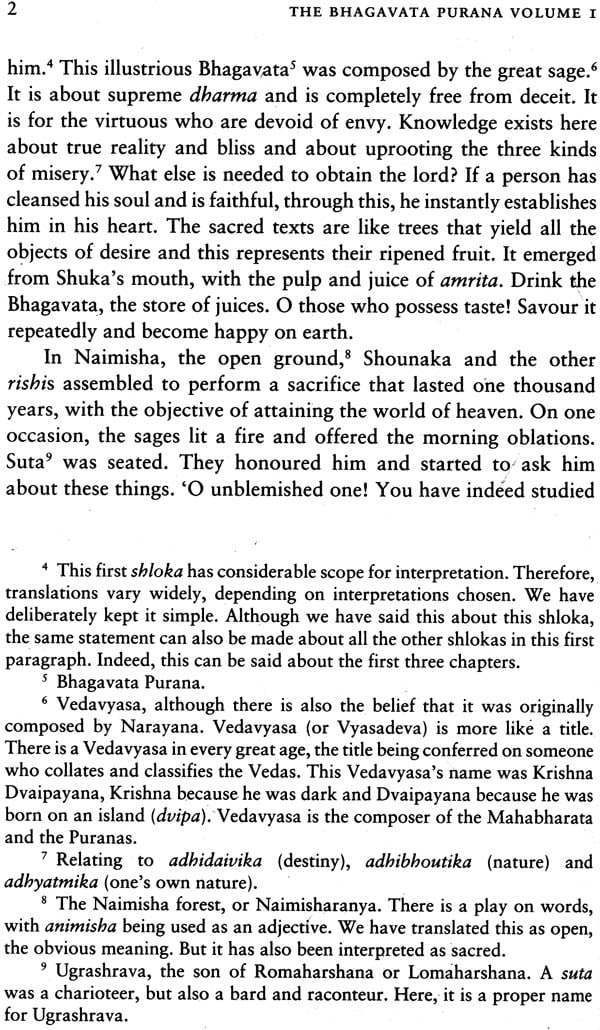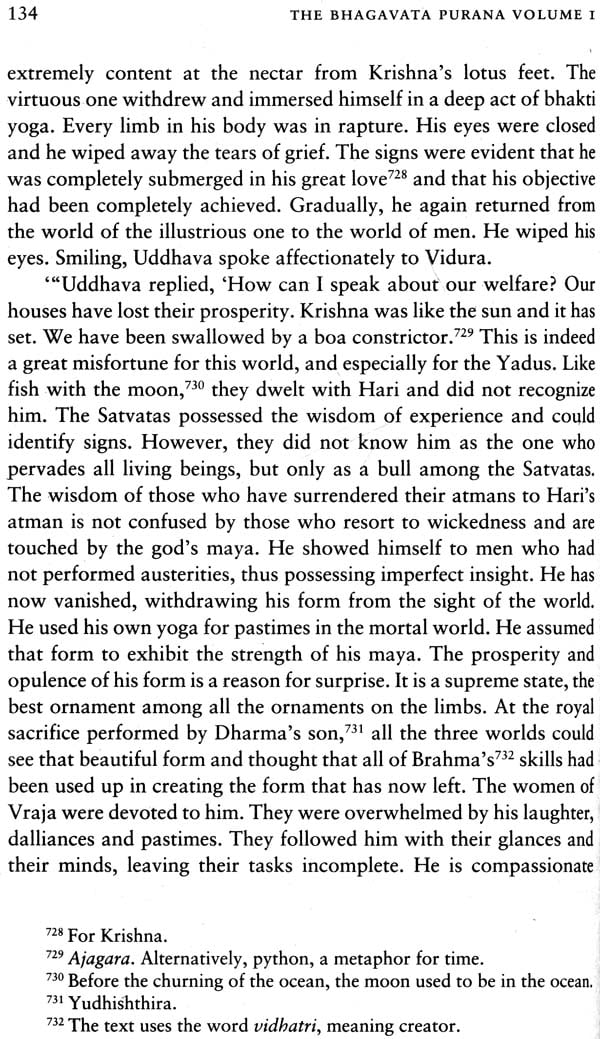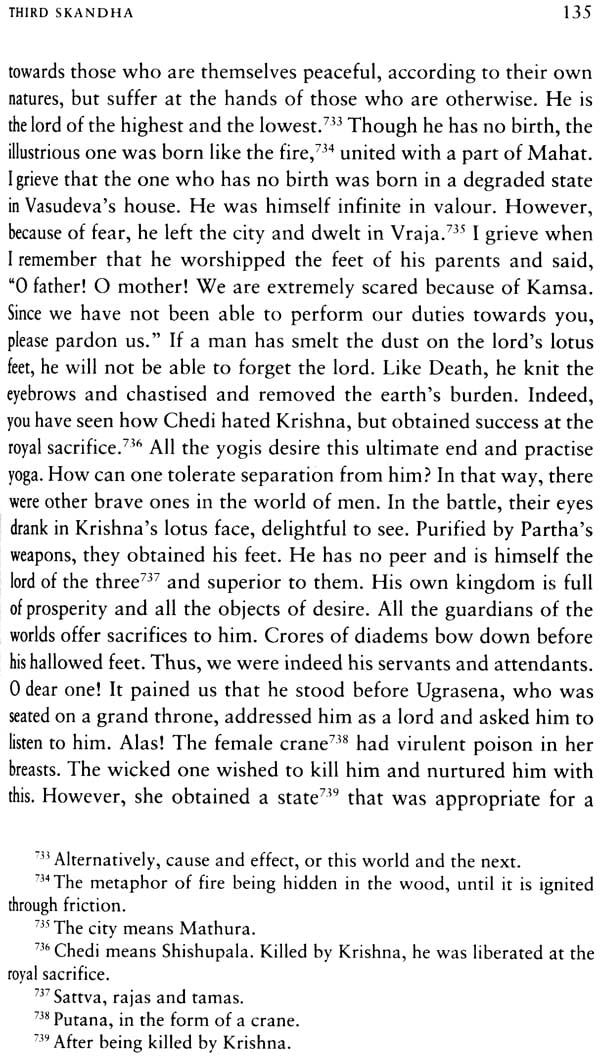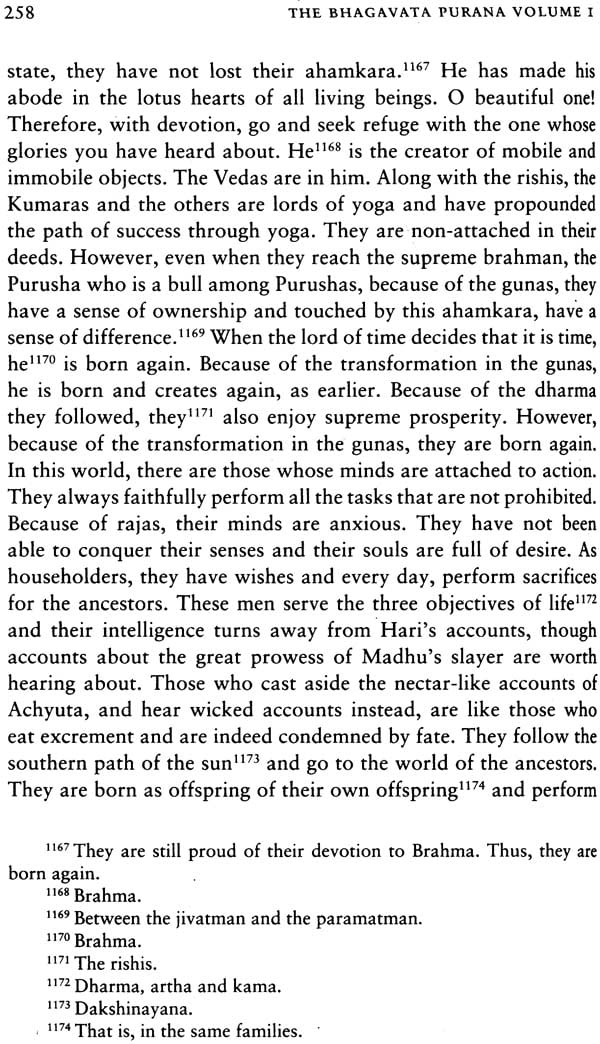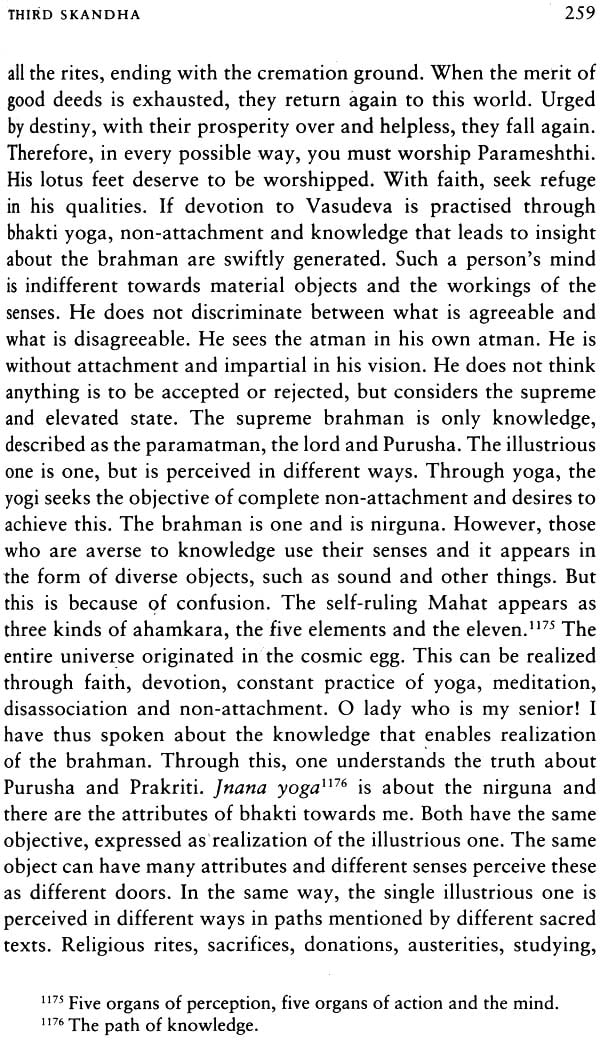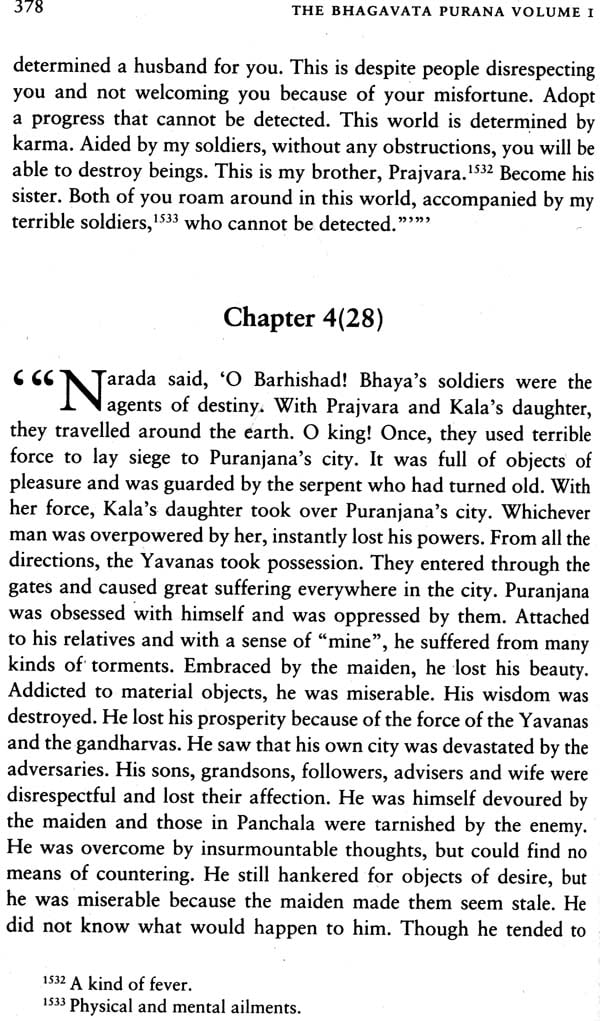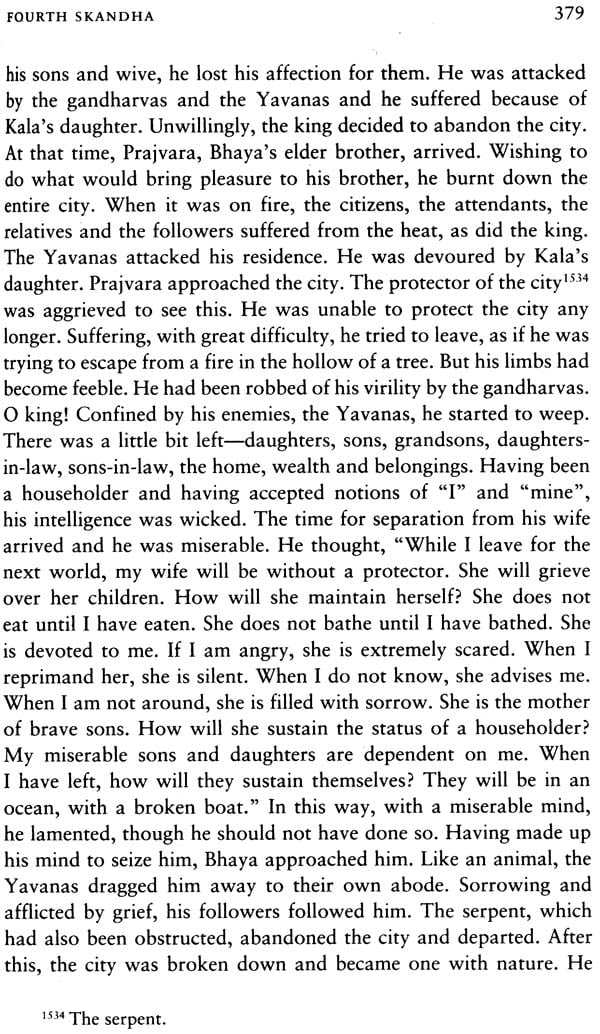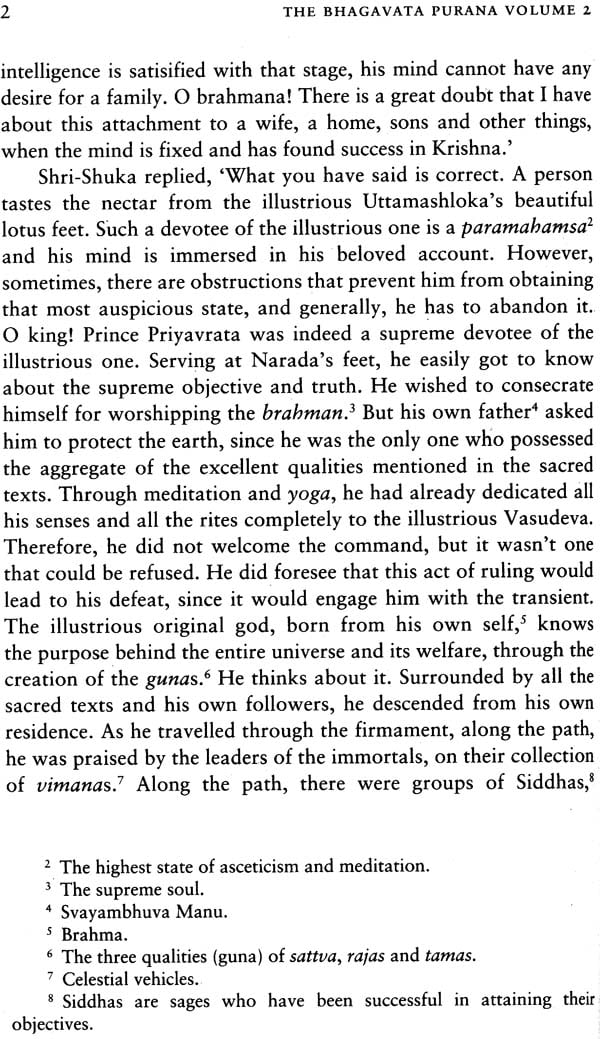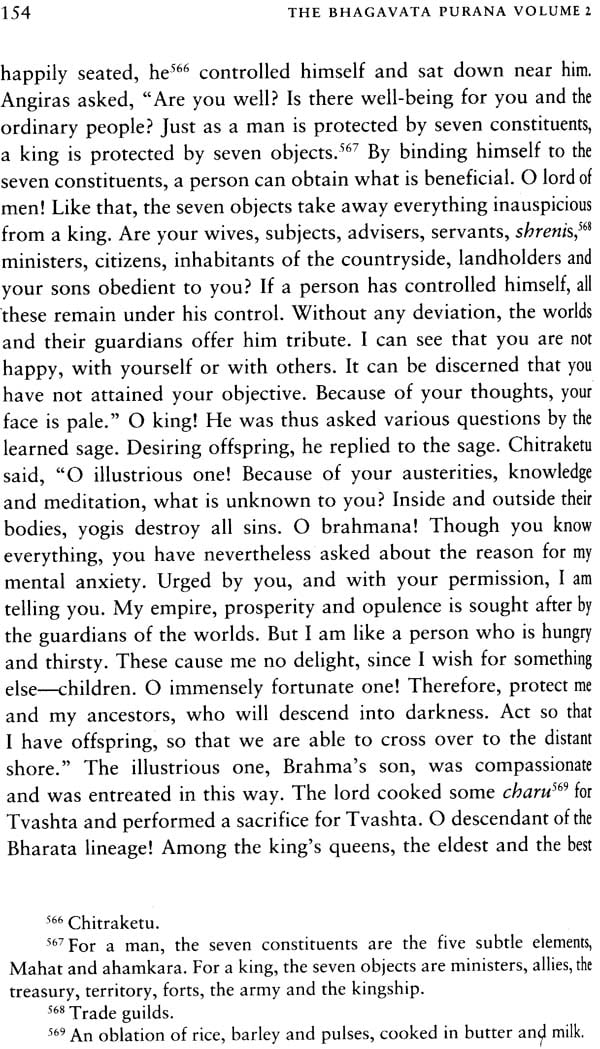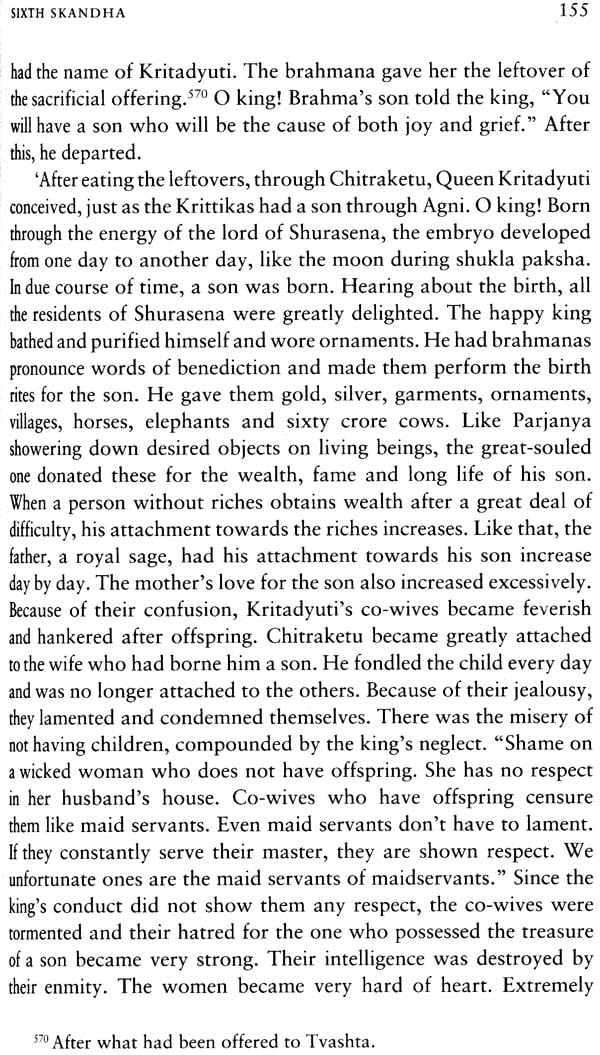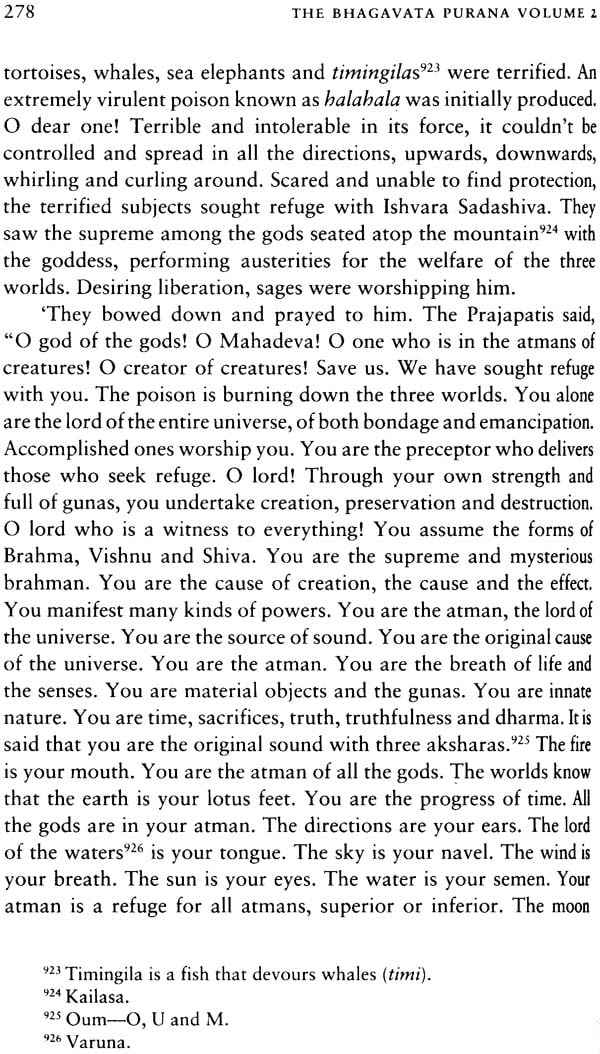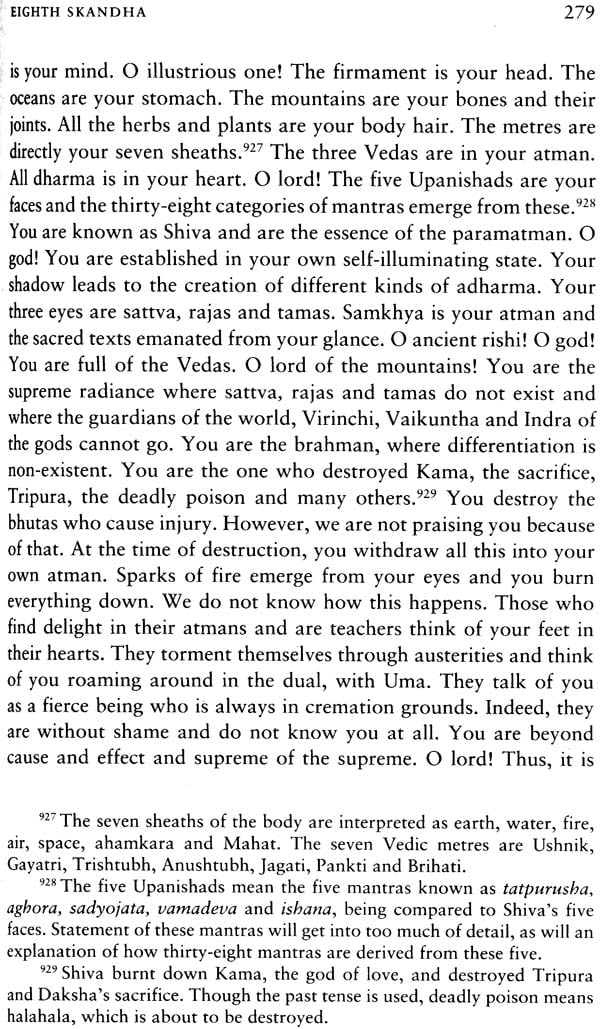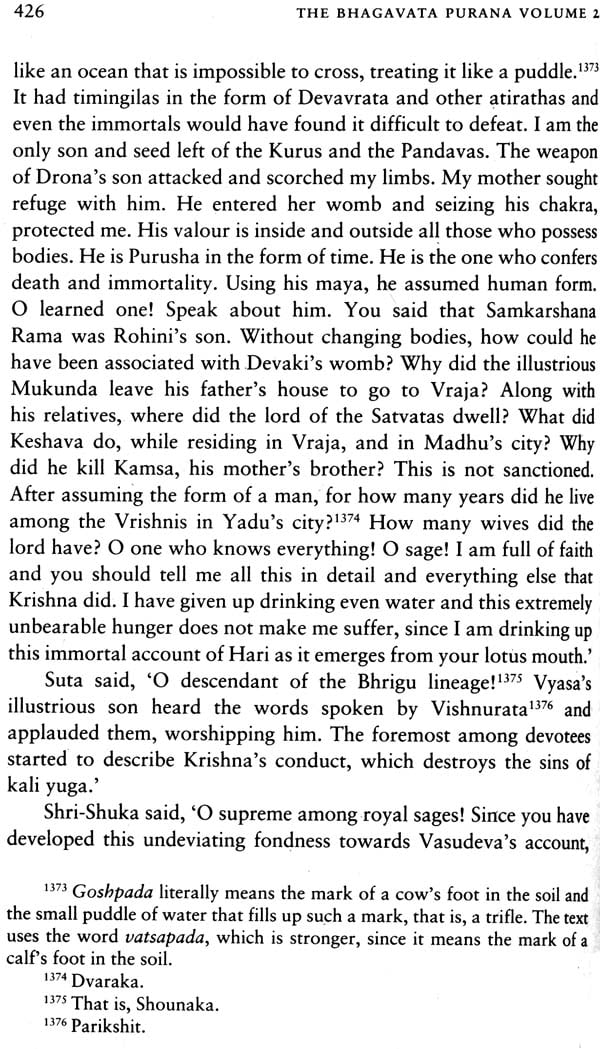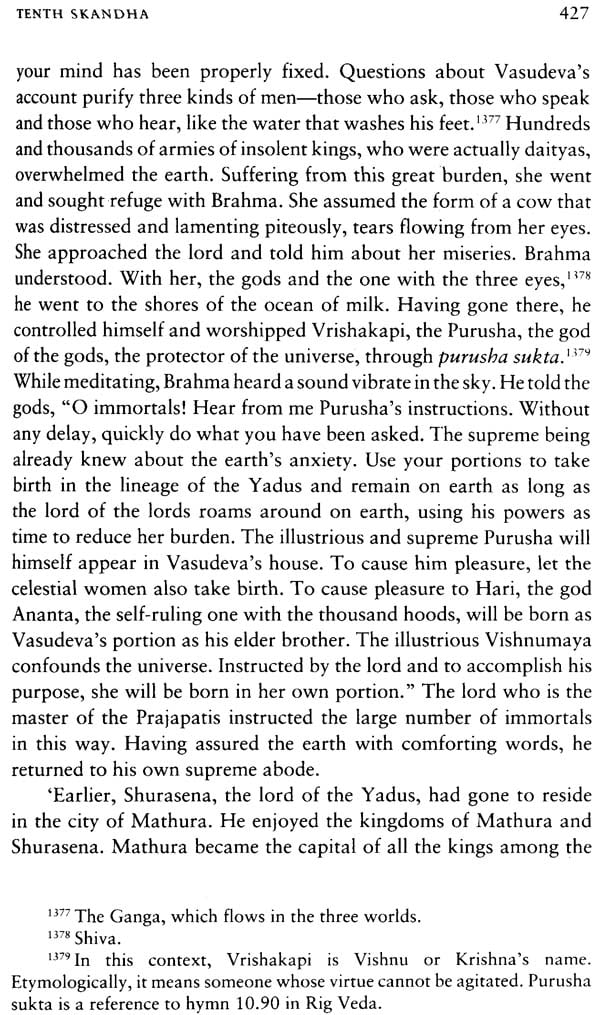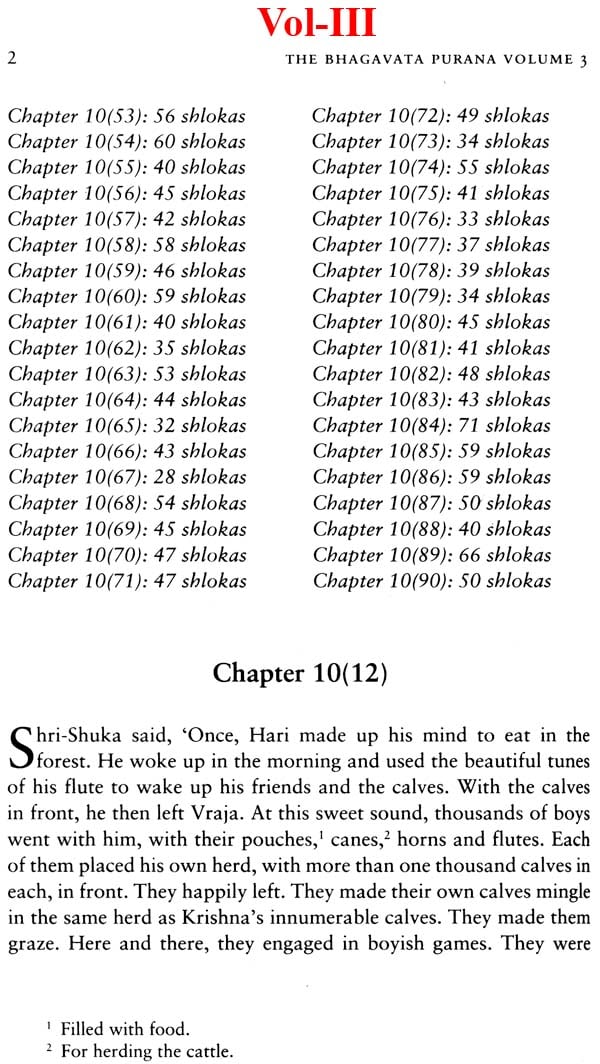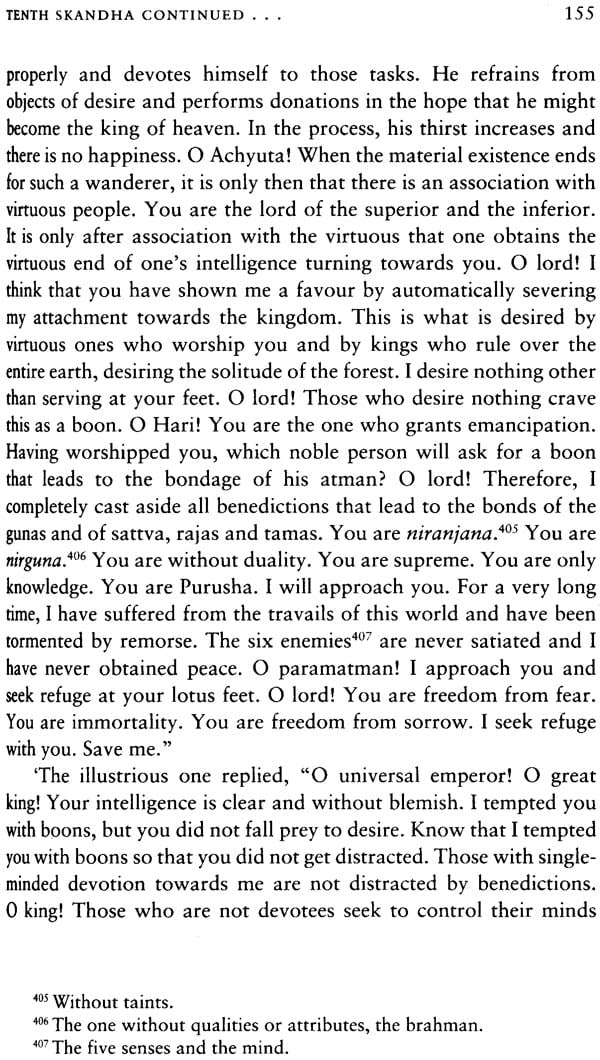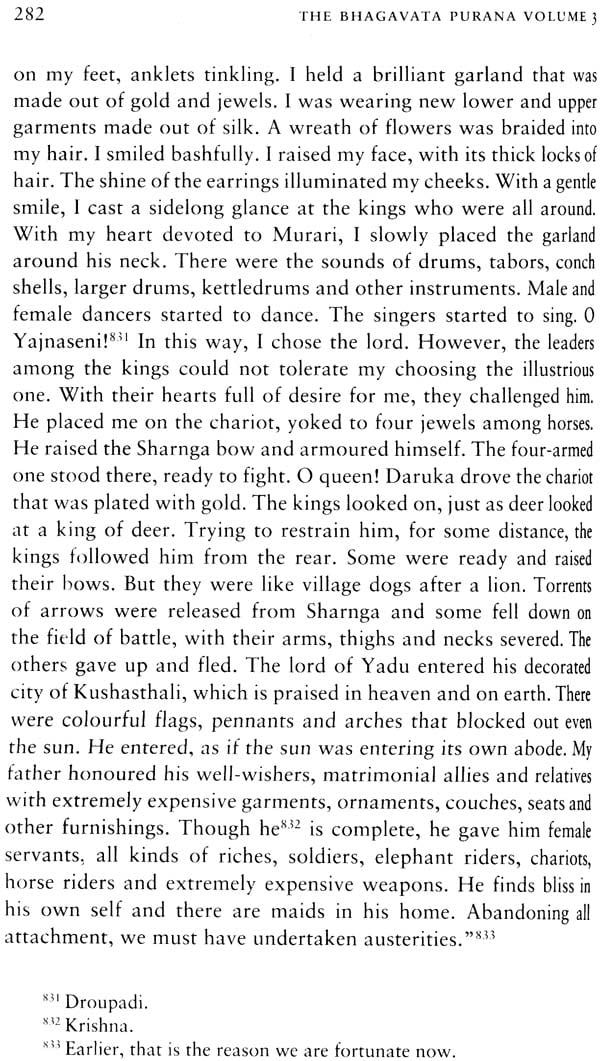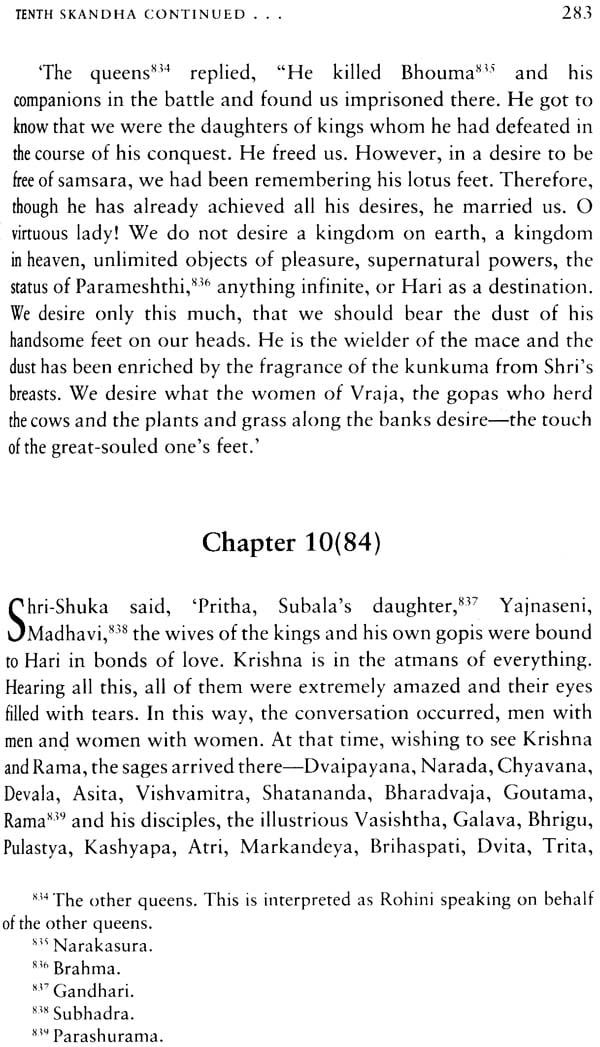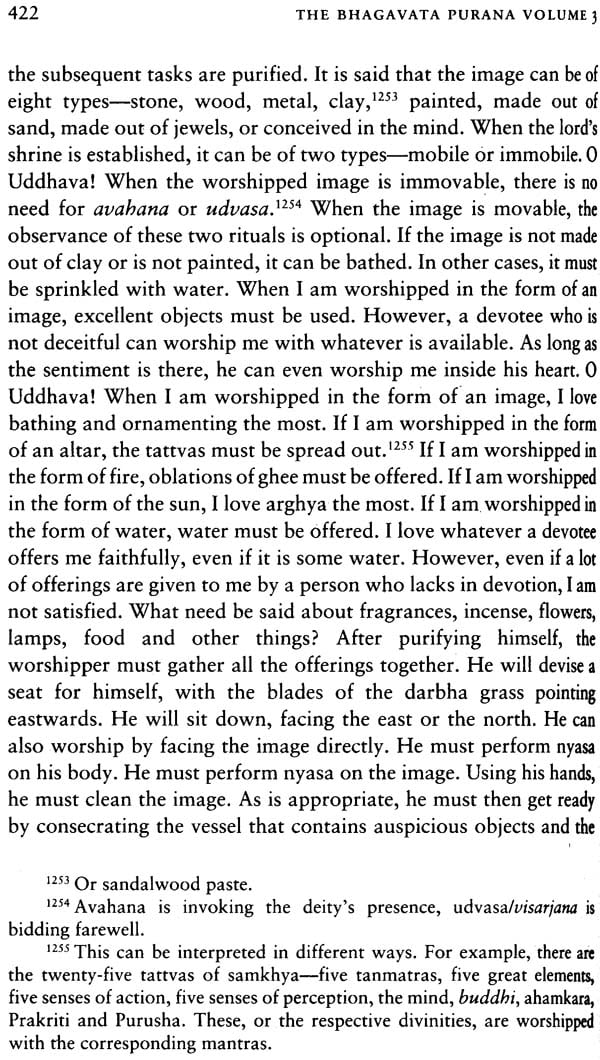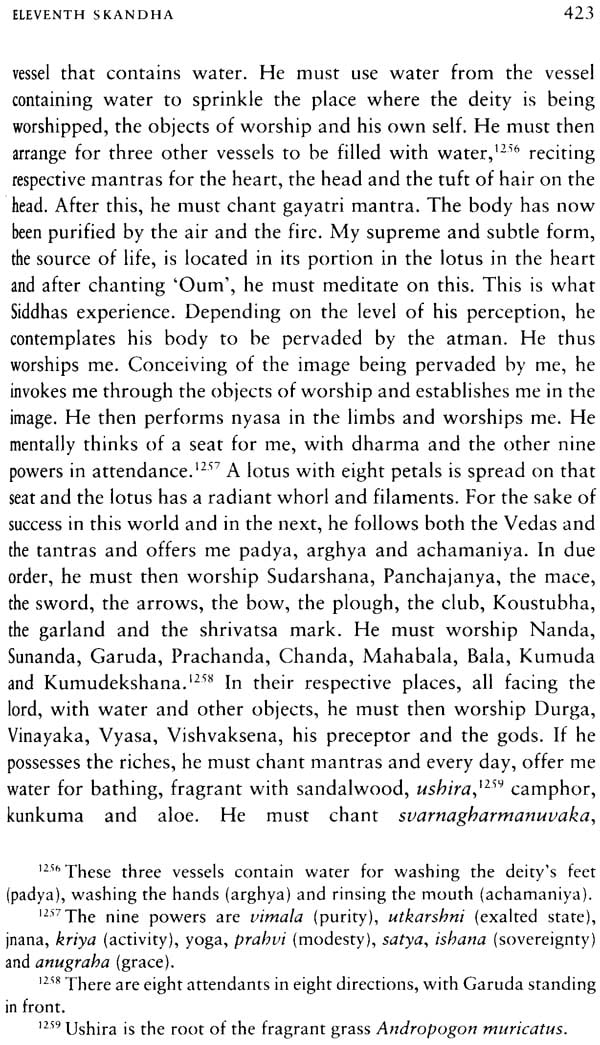
The Bhagavata Purana: Published by Penguin (Set of 3 Volumes)
Book Specification
| Item Code: | NAO560 |
| Author: | Bibek Debroy |
| Publisher: | Penguin Books India Pvt. Ltd. |
| Language: | English |
| Edition: | 2018 |
| ISBN: | Vol-I: 9780143428015 Vol-II: 9780143428022 Vol-III: 9780143428039 |
| Pages: | 1430 |
| Cover: | Paperback |
| Other Details | 8.5 inch x 5.5 inch |
| Weight | 1.20 kg |
Book Description
A seamless blend of fable and philosophy, the Bhagavata purana is perhaps the most Revered text in the Vaishnava Tradition. It brings to life the legends of gods, asuras sages and kings – all the while articulating the crucial ethical and philosophical tenets that underpin Hindu spiritualism.
The narrative unfolds though a series of conversations and interconnectyed stories. We are told how the sage Vyasa was inspired by narada to compose the Bhagavata Purana as means to illumine the path to a spiritual life. We learn of the devotion of Prahlada the austerity of Dhruva and the blinding conceit of Daksha. Kalso recounted are tales of the many incarnations of Vishnu, especially Krishna, whom we see grow from a beloved vishnua especially Krishna, whom we see grow from a beloved and playful child to a fierce to a fierce protector of the faithful.
The word 'purana' means old, ancient. The Puranas are old texts, usually referred to in conjunction with Itihasa (the Ramayana and the Mahabharata).' Whether Itihasa originally meant only the Mahabharata-with the Ramayana being added to that expression later-is a proposition on which there has been some discussion. But that's not relevant for our purposes. In the Chandogya Upanishad, there is an instance of the sage Narada approaching the sage Sanatkumara for instruction. When asked about what he already knew, Narada says he knows Itihasa and Purana, the Fifth Veda.' In other words, Itihasa-Purana possessed an elevated status. This by no means implies that the word 'purana', as used in these two Upanishads and other texts too, is to be understood in the sense of the word being applied to a set of texts known as the Puranas today. The Valmiki Ramayana is believed to have been composed by Valmiki and the Mahabharata by Krishna Dvaipayana Vedavyasa. After composing the Mahabharata, Krishna Dvaipayana Vedavyasa is believed to have composed, the Puranas. The use of the word 'composed' immediately indicates that Itihasa-Purana are smriti texts, with a human origin. They are not shruti texts, with a divine origin. Composition does not mean these texts were rendered into writing. Instead, there was a process of oral narration, with inevitable noise in the transmission and distribution Writing came much later.
Frederick Eden Pargiter's book on the Puranas is still 0 best introductions to this corpus. To explain the composition transmission process, one can do no better than to quote him.
The Vayu and Padma Puranas tell us how ancient genealogies tales and ballads were preserved, namely, by the sutas.: and describe the suta's duty ... The Vayu, Brahmanda and Vishnu give an account, how the original Purana came into existence Those three Puranas say- Krsna Dvaipayana divided the single Veda into four and arranged them, and so was called Vyas: He entrusted them to his four disciples, one to each, namely Paila Vaisampayana, Jaimini and Sumantu. Then with tales, anecdotes songs and lore that had come down from the ages he compiled Purana, and taught it and the Itihasa to his fifth disciple, the Romaharsana or Lomaharsana ... After that he compose Mahabharata. The epic itself implies that the Purana preceded it . . . As explained above, the sutas had from remote times preserved the genealogies of gods, rishis and kings, and traditions and ballads about celebrated men, that is, exactly the mater tales, songs and ancient lore-out of which the Purana constructed. Whether or not Vyasa composed the original Purana or superintended its compilation, is immaterial for the present purpose ... After the original Purana was composed, by Vyasa is said, his disciple Romaharsana taught it to his son Ugrashravas and Ugrashravas the souti' appears as the reciter in some of the present Puranas; and the sutas still retained the right to recite for their livelihood. But, as stated above, Romaharsana taught it to his six disciples, at least five of whom were brahmans. It thus passed into the hands of brahmans, and their appropriation grew into many Puranas, as Sanskrit learning became peculiarly the province of the brahmans, and as new and frankly sectarian Puranas were composed.
Pargiter cited reasons for his belief that the Mahabharata was posed after the original Purana, though that runs contrary he popular perception about the Mahabharata having been posed before the Puranas. That popular and linear perception is too simplistic, since texts evolved parallelly, not necessarily sequentially.
ln popular perception, Krishna Dvaipayana Vedavyasa composed the Mahabharata. He then composed the Puranas. Alternatively, he composed an original core Purana text, which has been lost, and others embellished it through additions. The adjective Purana', meaning old account or old text, became a proper noun, signifying a specific text. To be classified as a Purana, a Purana has to possess five attributes-pancha lakshmana. That is, five topics must be discussed-sarge, pratisarga, vamsha, manvantara and vamshanucharita. The clearest statement of this is in the Matsya Purana, A text like the Bhagavata Purana also mentions these, five attributes, but adds another five, making it a total of ten. Unlike Ramayana and the Mahabharata, there is no Critical Edition of the Puranas." Therefore, citing chapter and verse from a Purana is somewhat more difficult, since verse, if not chapter, may from text to text. With that caveat, the relevant shloka (verse) should be in the fifty-third chapter of the Matysa Purana. Sarga means the original or primary creation. The converse of sarga is universal destruction, or pralaya. That period of sarga lasts for one of Brahma's days, known as kalpa. When Brahma sleeps, during his night, there is universal destruction.
Contents
Vol-I
| Acknowledgements | IX |
| Introduction | XI |
| First Skandha | 1 |
| Second Skandha | 83 |
| Third Skandha | 127 |
| Fourth Skandha | 265 |
| Aknowledgements | lX |
| Introduction | Xl |
| Fifth Skandha | 1 |
| Sixth Skandha | 101 |
| Seventh Skandha | 181 |
| Eigths Skandha | 255 |
| Ninth Skandha | 339 |
| Tenth Skandha | 425 |
| Acknowledgements | ix |
| Introduction | xi |
| Tenth Skandha Continued…. | 1 |
| Eleventh Skandha | 313 |
| Twelth Skandha | 443 |

